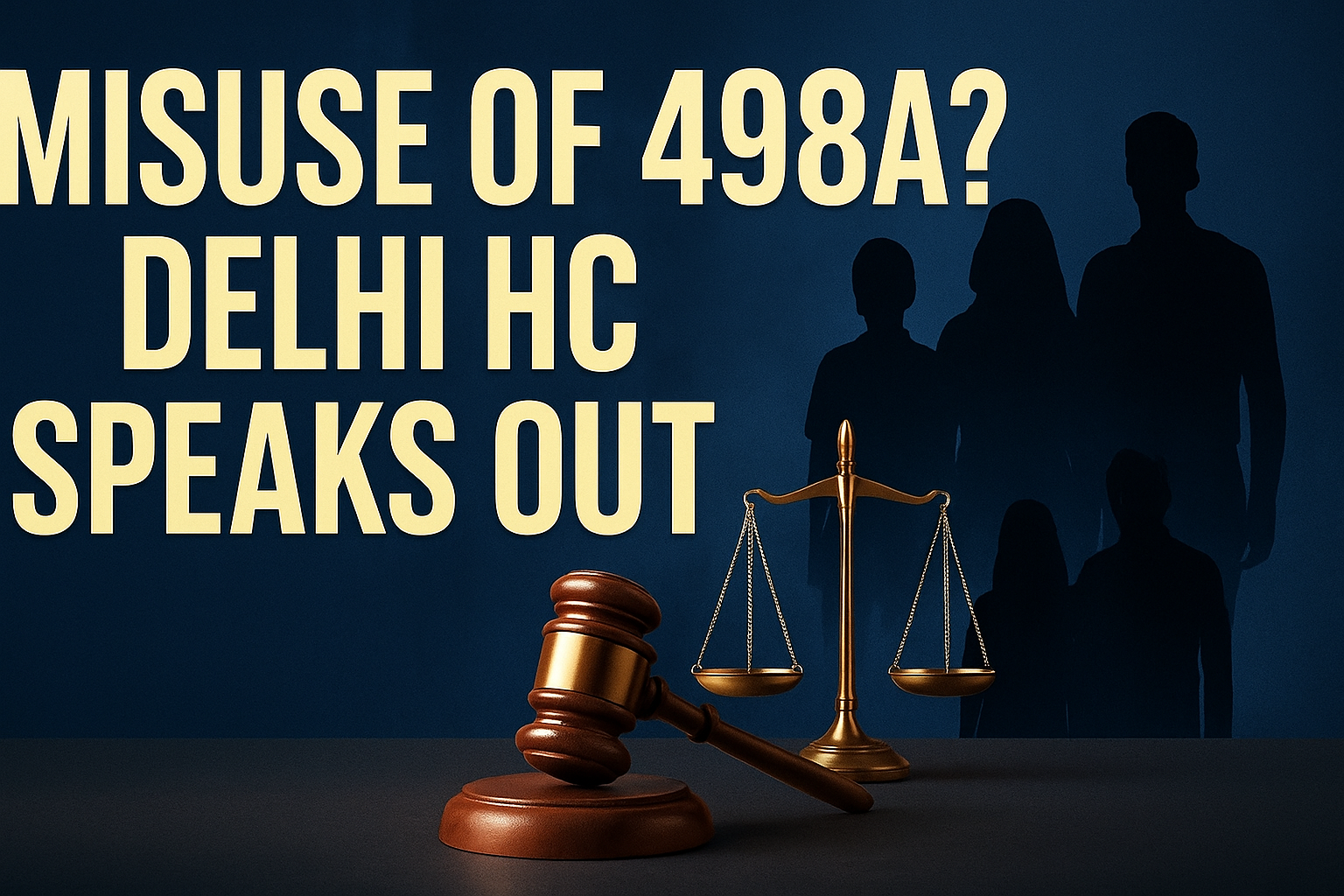Introduction
Our legal system is for the people and for the protection against any wrongdoing towards them but there are some laws which are made to protect but people use it as a weapon against others. One of the most controversial sections in present time is Section 498A of the Indian Penal Code (IPC) which was a vital safeguard for married women facing cruelty, harassment and dowry related abuse at the hands of their husband or in-laws. I had helped many victims’ offering legal recourse in situations of domestic violence and dowry demands but with the time provision became one of the most debatable in Indian Criminal Law due to the rise of allegations of misuse and use of it as a weapon against others and Misuse of Section 498A has become so common now a days.
Background
Section 498A IPC was a legislative response to the alarming rise in dowry deaths and domestic violence cases. This provision criminalized cruelty by the husband, and his relatives also made it a cognizable, non- bailable and non- compoundable offence and also ensuring police intervention but over the years many complaints filed under this section included distant or uninvolved relatives of the husband such as elderly parents, sibling living separately or even far off cousins. This not only places a burden on the innocent parties but also makes a burden on the judicial system and sometimes causes irreparable damage to family relationships. The apex courts many times mentioned not to make small matrimonial disputes into criminal charges to protect innocent family members from criminal charges.
On 1 July 2024, the Indian Penal Code (IPC) was replaced with Bharatiya Nyaya Sanhita (BNS). Now Section 498A of IPC replaced Section 85 BNS while Section 86 BNS separately defines Cruelty. Although the language and scope of these provisions largely replicate Section 498A of IPC.
What The Court Said
In the matter of Pooja Rasne v. State of NCT of Delhi, Justice Arun Monga of the High Court of Delhi underscored the increasing cases of maliciously implicating a husband’s relatives in complaint under Section 498A. Justice Arun Monga also states that the provision is made to protect women from cruelty but the misuse of this provision against extended family is not less than any weapon against the innocent people especially when vague and omnibus allegations are made without concrete evidence. The Court added that the original grievance must be addressed but at the same time innocent individuals should not be dragged into prolonged and stressful criminal proceedings and there is need of strict judicial scrutiny before arrest is made in matrimonial cases.
Conclusion
The Delhi High Court warning about the misuse of Section 498A comes at a critical time when India has shifted from IPC to BNS framework while Section 498A has been restructured into Section 85 and 86 of the BNS, the underlying issues remain unchanged. The court has an essential role in ensuring that the law is applied carefully with due regard to the rights of both complaints and the accused. By carefully applying this balance the legal system can uphold both justice and trust ensuring that matrimonial laws serve their intended purpose without being misused.
About the Author
Tushar Kumar is a final-year BBA-LLB student at Guru Gobind Singh Indraprastha University. With a strong interest in Intellectual Property Rights, he enjoys exploring how law interacts with innovation and creativity. He’s equally passionate about legal writing, Research and believes in making complex legal ideas easier to understand through clear articles. Tushar continues to deepen his understanding of the law while contributing thoughtful pieces on contemporary legal issues.

